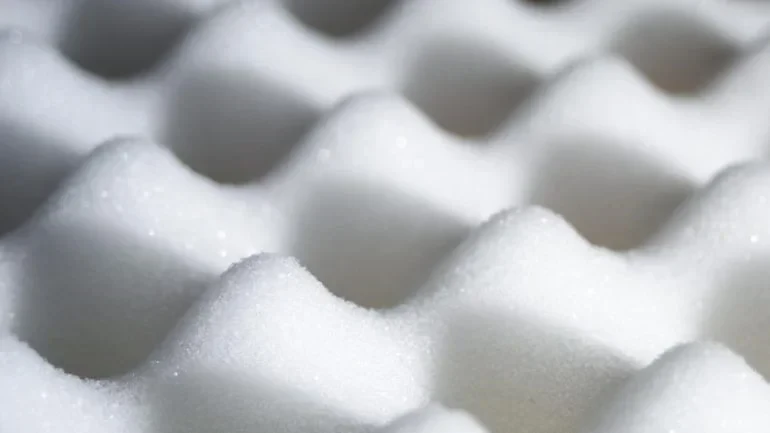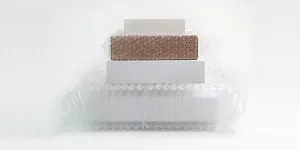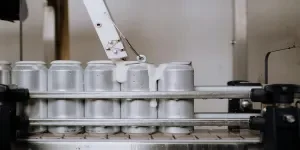Nanotechnology is revolutionising packaging materials, safeguarding products from spoilage and degradation while extending shelf life.

In the dynamic landscape of packaging, where preservation and sustainability are paramount concerns, nanotechnology emerges as a promising frontier. With its potential to revolutionise the way products are packaged, nanotechnology offers a spectrum of benefits ranging from extended shelf life to improved barrier properties.
Harnessing nanotechnology for enhanced barrier properties and shelf life involves using incredibly small particles called nanoparticles to improve the effectiveness of packaging materials.
These nanoparticles are so tiny that they can create barriers that prevent things like oxygen and moisture from getting into packaged products, thus keeping them fresher for longer periods.
By incorporating nanotechnology into packaging, manufacturers can create materials that better protect products, leading to increased shelf life and improved preservation of freshness.
Understanding nanotechnology in packaging
Nanotechnology involves manipulating matter on an atomic or molecular scale, typically within the range of 1 to 100 nanometres. In packaging, nanotechnology finds application in the design and development of materials with enhanced properties.
These materials, often referred to as nanomaterials, exhibit unique characteristics owing to their minuscule size.
Nanotechnology facilitates the creation of packaging materials with superior barrier properties, enabling them to effectively shield products from external factors such as moisture, gases, and contaminants.
Moreover, nanomaterials offer versatility, allowing for customisation to meet specific packaging requirements. Common nanomaterials used in packaging include nanoparticles, nanocomposites, and nano-coatings.
Enhancing barrier properties with nanotechnology
One of the primary challenges in packaging is maintaining the integrity and freshness of perishable goods. Traditional packaging materials, while effective to some extent, may fall short in providing adequate protection against factors like oxygen and moisture ingress.
This is where nanotechnology steps in, offering solutions that significantly enhance barrier properties.
Nanocomposites, for instance, incorporate nanoparticles into conventional packaging materials such as plastics or films. These nanoparticles form impermeable barriers, preventing the passage of gases and moisture and thus extending the shelf life of packaged products.
Additionally, nano-coatings can be applied to packaging surfaces to create hydrophobic or oleophobic barriers, further safeguarding contents from environmental hazards.
Implications for sustainability and consumer safety
Beyond extending shelf life and enhancing barrier properties, nanotechnology in packaging holds implications for sustainability and consumer safety. By prolonging the viability of packaged products, nanotechnology helps reduce food waste, a pressing global concern.
Moreover, the use of nanomaterials allows for the development of thinner, lighter packaging, thereby reducing material consumption and environmental impact.
However, alongside these benefits, the safety of nanomaterials in packaging remains a subject of scrutiny.
While regulatory bodies such as the European Food Safety Authority (EFSA) assess the safety of nanomaterials used in food contact materials, concerns persist regarding potential health risks associated with nanoparticle migration.
Continued research and stringent regulatory oversight are imperative to ensure the responsible integration of nanotechnology into packaging.
The outlook for nanotechnology in packaging
Nanotechnology presents a paradigm shift in the realm of packaging, offering solutions that address critical challenges while paving the way for sustainable practices. From enhancing barrier properties to extending shelf life, the applications of nanotechnology in packaging are vast and promising.
However, as with any emerging technology, careful consideration of safety and environmental implications is essential.
As industries continue to explore the potential of nanotechnology, collaboration between researchers, manufacturers, and regulatory agencies will be key to unlocking its full benefits while mitigating associated risks.
By harnessing the power of nanotechnology responsibly, the future of packaging holds promise for greater efficiency, sustainability, and consumer satisfaction.
Source from Packaging Gateway
Disclaimer: The information set forth above is provided by packaging-gateway.com independently of Alibaba.com. Alibaba.com makes no representation and warranties as to the quality and reliability of the seller and products.




